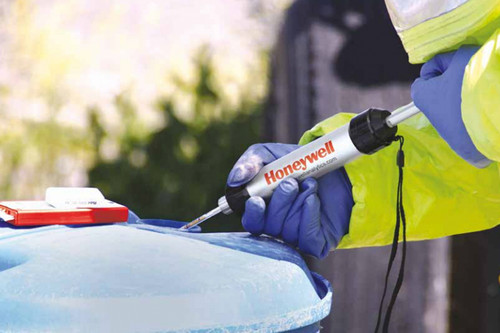Gas Detector Tubes: How Do I Read My Gas Detection Tubes?
Gas detection tubes have exploded in popularity over the last few decades. These single-use tubes are designed to record the presence of chemical compounds in the air. Some are toxic, like different types of acid, while others are harmless, such as water vapor.
Just insert the tubes into a hand pump, suck in air through the pump, and read the results to find out if the air is safe to breathe. Gas detection tubes are commonly used to take grab samples in a wide variety of applications, including potentially hazardous work environments.
The tubes use a color-coded system and can only be used to measure specific chemical compounds within a specific concentration range. But not everyone knows how to read the results of gas detection tubes. Keep your team safe on the job and learn the ins and outs of reading gas detection tubes.
What Are Gas Detection Tubes?
These tubes are slim, straw-like glass tubes with a color-coded measurement system. They’re lightweight and relatively cheap compared to electronic gas monitors, and workers can only use each tube once before throwing them away. They’re best for teams and individuals that don’t measure air quality regularly. So, instead of buying a portable electronic gas detector, you can buy a few quality gas detection tubes and use them to measure specific or unusual gases.
Each tube is filled with sorbent granules, which change color depending on the type of gas you’re measuring. A single tube is only designed to measure one type of chemical compound within a particular concentration range, such as hydrogen sulfide at 100 to 500 ppm. Thus, you would need to buy a different tube for measuring carbon dioxide or hydrogen sulfide at 0 to 100 ppm.
Reading Gas Detection Tubes
To use gas detection tubes, break off the tips at both ends of the tube: they usually come with a tip breaker. Then, insert the tubes into the hand pump. The pump will then be used to draw a very specific volume of air through the tube. Some pumps use a bellows and a specific number of squeezes, while others use a piston, similar to a syringe.
The sorbent granules will then react to the chemicals in the air by changing color.
To read the results, look at the measurements lining the tube and find the spot where the color ends.This color change, or stain as it is referred to, will have a length directly tied to the gas concentration. This can then be read directly on the tube, using the pre-printed gradations.
This marks the amount of chemical compounds in the air. The accuracy of these readings can deviate by about plus or minus 20%. Temperature, humidity, and the crispness of the air can affect the readings, so it’s best to take several readings and average the results.
Choosing Gas Detection Tubes
There are only a few manufacturers that make gas detection tubes, but quality should be everyone’s priority when it comes to choosing gas monitoring equipment. RAE is known for serving some of the biggest and most respected companies and government agencies in the world, including the U.S. government. They offer a range of personal gas and radiation detection devices, such as the RAE PGM-2500 QRAE 3 Non-Wireless Pumped Multi-Gas Monitor, which provides constant readings of gas levels.
Finding quality gas monitoring equipment is essential to your health and safety. They’re perfect for taking quick snapshots of the quality of the air in your surroundings. For more information about gas detection tubes or for gas monitor calibration services, please contact us at PK Safety.
Related Searches
Gas Detection Tubes, Honeywell H2S Tubes
Recent Posts
-
Customizing Gas Detectors: Tailoring Solutions to Fit Your Unique Requirements
In today’s diverse industrial landscape, a one-size-fits-all approach to safety simply doesn’t cu …Jul 3rd 2024 -
10 Ways to Prevent Wildfires
You can prevent wildfires by extinguishing flames before you leave the worksite. Avoid practicing …Jul 1st 2024 -
ANSI/ISEA 138 Safety Gloves: Ensuring Hand Protection
The human hand is an anatomical masterpiece and arguably the greatest tool attached to our bodies …Jun 25th 2024





